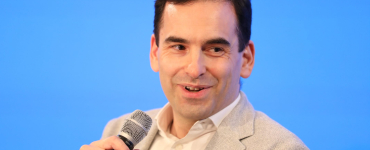The use of rescue drones, telemedicine, 5G and artificial intelligence: digital services and technology are optimising the rescue services. On 28 May, the Mobility Competence Group will be discussing the status quo of rescue mobility, what is possible in theory and in practice and which solutions are already in use at the eco Office in Cologne under the motto “Digitalisation, 5G and AI – How Rescue Mobility is Changing“ together with our experts. You can register for the German-language event until 23 May. We spoke to Joachim Schade, ifak – Institut für Automation und Kommunikation e. V., in advance about how rescue mobility will benefit from the use of 5G.
Joachim Schade is a research assistant at the Institute for Automation and Communication in Magdeburg’s Traffic and Assistance business unit. He is responsible for connected driving and manages and works on research and development projects related to traffic data collection and processing.
To what extent does rescue mobility benefit from the use of 5G?
Joachim Schade: 5G offers a range of possibilities that previous mobile communications standards did not have. Features of 5G include, for example, the networking of a large number of communication participants, as required for IoT applications, data communication with extremely short transmission and response times in the millisecond range or the transmission of large amounts of data, such as video data in real time. One example of an application where rescue mobility benefits from 5G is the transmission of live video data from an accident scene to the control centre or ambulance using drones. This allows the emergency services to get a picture of the situation at the scene of the accident before they reach the scene, optimising the operation and saving valuable time.
Another promising innovation with 5G is the ability to use data channels exclusively. I book a transmission slot for myself, so to speak, and do not have to share the bandwidth with other participants – as is normally the case with wireless data traffic. This can bring enormous advantages, particularly in the event of a rescue operation, when data communication still works for the emergency services in the event of disasters and overloaded mobile phone networks, for example.
In the 5G Real Lab project, you have developed a prioritisation system to speed up ambulances for Wolfsburg. How exactly does it work?
Schade: When an emergency call arrives at the Wolfsburg fire brigade control centre, an alarm is generated, and the relevant emergency vehicles are dispatched. The prioritisation system recognises the alarm and also knows which emergency vehicles have been assigned. An optimised route is then generated, starting from the current location of the emergency vehicles to the scene of the incident. The traffic lights are then gradually switched to green at all junctions that are crossed by the emergency services during their journey. It is important that the traffic lights do not turn green too early so as not to disrupt the normal traffic flow any more than necessary, but also not too late so that the traffic waiting at the traffic lights can flow away in good time and the emergency vehicles can pass through the junction unhindered and without delay.
The prioritisation system is fully automated, i.e. no manual intervention is required. This is particularly important as it must not jeopardise the fire brigade’s operations and is an important prerequisite for the acceptance of the system.
There has already been a test phase for the prioritisation system. What insights and lessons have you learnt?
Schade: The prioritisation system consists of several components and systems, which also have different responsibilities. A number of prerequisites are necessary for the whole thing to work. For example, it must be ensured that communication between the systems runs smoothly. To this end, interfaces have been created or upgraded to enable data exchange between the systems involved. Data security is a particularly important aspect. Especially in safety-critical areas such as the fire service, it is essential that data is transmitted in a tamper-proof and tap-proof manner. During the test operation, the aim was to find any remaining errors and optimise the system with the aim of achieving stable and fault-tolerant productive operation at a later date. The development work and the evaluation of the prioritisation system with a total of 5 partners involved was a challenging but also exciting task. In the end, the functionality was successfully demonstrated – first with test drives and later with real operational drives.
Looking to the future of digitalisation in the emergency services: What do you think it needs?
Schade: With its many new features, 5G offers great potential for the digitalisation of emergency services. The future use of 5G as a uniform standard for voice and data communication for rescue services and public authority radio, in general, combines the advantages of the narrowband digital public authority radio TETRA used to date with the new possibilities of a modern broadband mobile radio standard. So-called mission-critical services, i.e. voice and data services for public authority radio, are already included in the specifications of the 5G standard. However, the standard has not yet been fully implemented in the public 5G internet for the most part. In order to be able to utilise the benefits of 5G for rescue mobility in practice, the new 5G specifications need to be implemented as quickly as possible and the network needs to be expanded across the board – especially in rural areas.
Thank you very much for the interview, Mr Schade.




